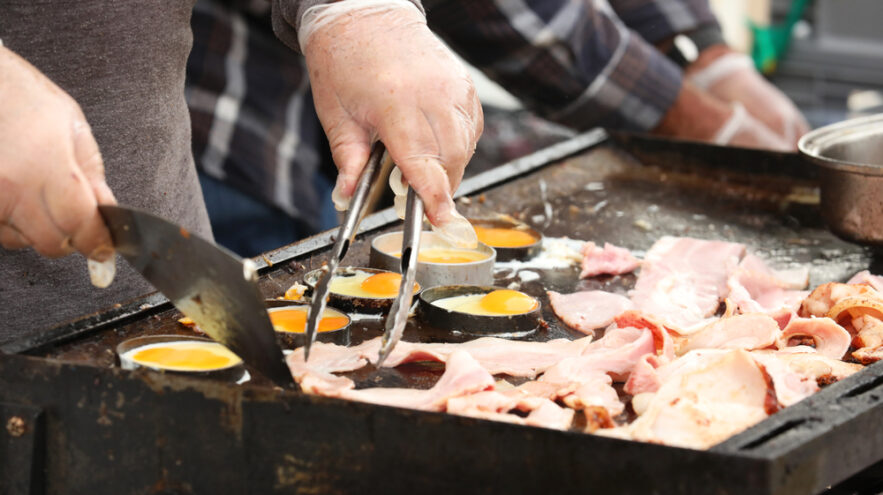The Top 10 Safe Food Handling Techniques You Need to Know

The world of food safety can be vast and overwhelming. When do you wash your hands? When do you change gloves? What internal temperature must chicken reach while you’re cooking it? Food handlers face countless questions like these every day.
Whether you’re new to the industry or are looking for ways to improve, there are certain safe food handling techniques that you need to know. Here are 10 of them:
-
Always wash your hands.
If you’re questioning whether you should wash your hands, that’s a good sign you should do it. Always wash your hands between tasks and scrub them for 10-20 seconds at a minimum.
-
Memorize proper cook temps.
There are only three rules of thumb you need to know, so it’s easy to memorize them! Poultry must reach 165°F, ground meats must reach 155°F and fish must reach 145°F.
-
Keep raw and cooked separated.
It’s important to avoid cross-contamination by keeping the equipment and utensils used to prepare raw meat (as well as the meat itself) separated from ready-to-eat or cooked foods.
-
Know proper hold temps as well.
The two categories to worry about here are “hot” and “cold.” Hot foods must be kept at a temperature of 140°F or higher while cold foods must be kept at a temperature of 40°F or lower.
-
Don’t use your hands.
If at all possible, avoid touching any food or food-related equipment and utensils with your hands. This is especially true for food that’s ready to eat. Use tongs or gloves instead.
-
Clean tools and utensils.
Cutting boards need to be cleaned often. Counters must be wiped down. Utensils and pots have to be soaked. Yes, there’s a lot of cleaning needed in the kitchen but it promotes a safe environment and helps you avoid health code violations.
-
Sanitize regularly.
If it has the potential for raw food exposure, it needs to be thoroughly sanitized by the end of the day (or the end of the hour, if possible). Cleaning in itself is not good enough.
-
Follow the “Four Steps”
Wash. Rinse. Sanitize. Air dry.
-
Brush up on food handling content.
Take a food handlers course, if you haven’t taken one in a while, or brush up on food handling-related content on blogs, websites and publications.
-
Ask someone with food handling experience.
Sometimes, the best technique is asking someone else about their techniques. Whether someone is in charge or has years of experience in the industry, ask for their advice (especially when it comes to food safety areas where you struggle).
These are just a few food handling techniques that can help with food safety and more. For regular food handling tips, be sure to stay tuned to our blog.
